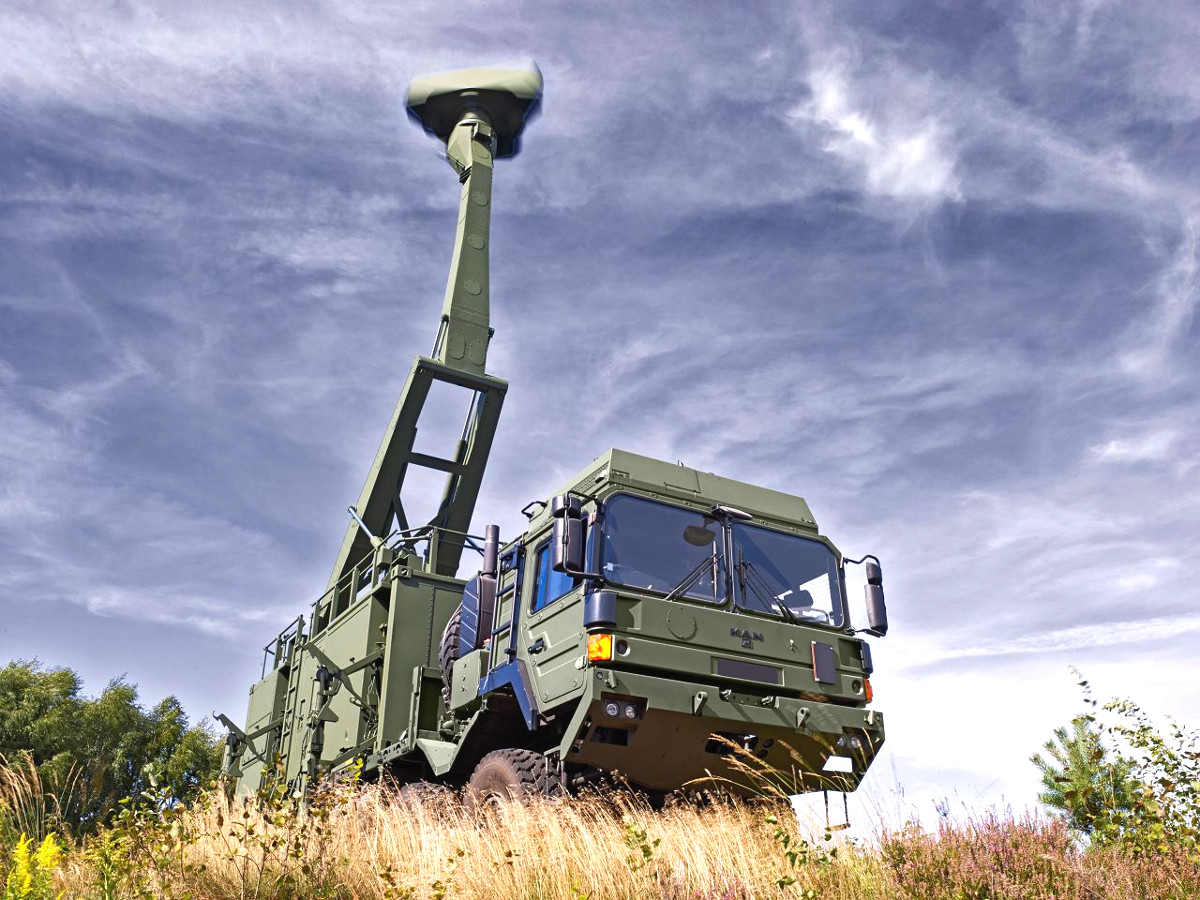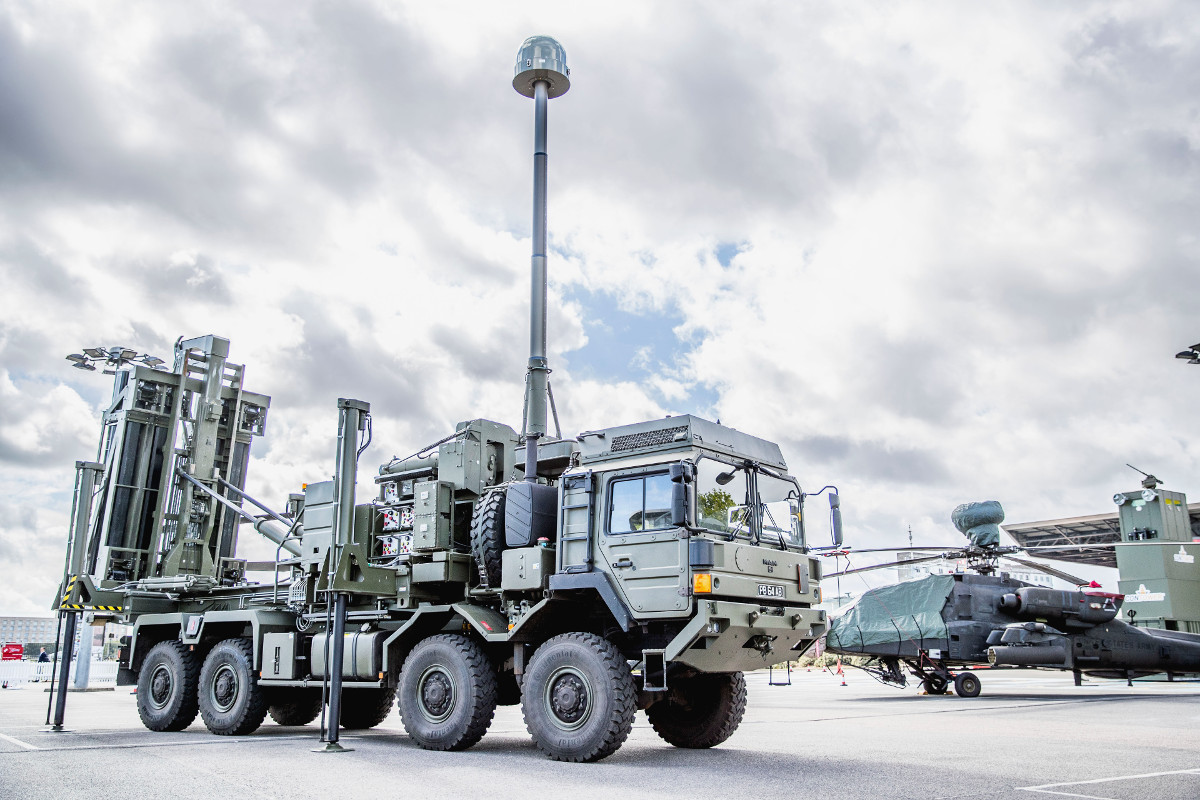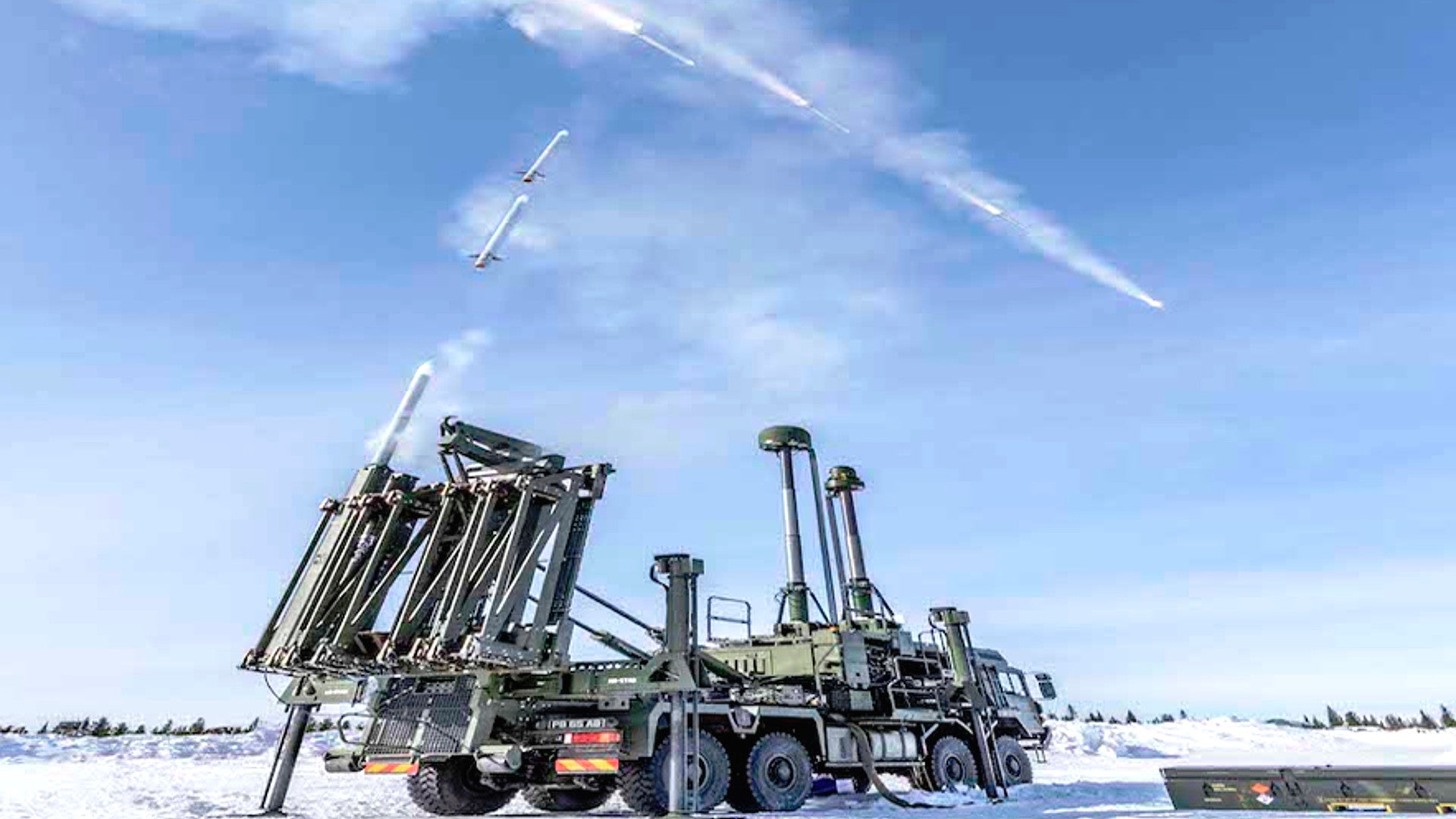The British Army’s Land Ceptor air defense system has completed its first successful live fire test. The U.K. Ministry of Defense says the weapon will offer a significant boost in capabilities over existing Rapier air defense systems and the live fire trials follow news that the naval variant, Sea Ceptor, has entered operational service with the Royal Navy.
U.K. Defense Secretary Gavin Williamson revealed the test on May 28, 2018, but did not say when it had occurred. He said that event, which took place a Swedish test range on the Baltic Sea, evaluated the complete Land Ceptor system, which includes a truck-mounted launcher and two support vehicles. Video and images that the U.K. Ministry of Defense released show that the target in question was a Kratos BQM-167 drone.
“In the face of intensifying threats, it is vital that our Armed Forces have the capabilities to keep Britain safe,” Williamson said on May 28, 2018. “Land Ceptor will be a formidable battlefield barrier, protecting our troops from strikes and enemy aircraft while on operations.”
A product of the European missile consortium MBDA, the Land Ceptor missile itself, also known as the Common Anti-Air Modular Missile (CAMM), uses a number of same components as the infrared-guided Advanced Short Range Air-to-Air Missile (ASRAAM). However, CAMM has a new active radar homing guidance system, as well as a two-way data link to improve accuracy. It is reportedly able to engage manned and unmanned aircraft, low-flying helicopters, and cruise missiles.
In development since the late 2000s, a total of six countries, including the United Kingdom, have plans to adopt the weapon in its land- or sea-based configurations. There is also a larger, extended range version already in the works that will push the system’s maximum reach from more than 15 miles to over 25 miles.
For the British Army, Land Ceptor will be a significant upgrade over the existing radar-assisted command-guided Rapier missiles, which can only engage targets a little more than five miles away. The U.K. Ministry of Defense says that the complete, networked air defense system will also be able to spot targets up to seven times further away thanks to its organic Saab Giraffe radar and Battlespace Management Command, Control, Compute, Communicate and Inform (BMC4I) system from Israeli defense contractor Rafael.

Rafeal’s BMC4I system is part of the larger Sky Saber air defense system, which is set to be a joint British Army-Royal Air Force arrangement. As part of this truly integrated air defense network, Land Ceptor units will be able to share and receive targeting data with each other, vastly extending their ability to spot and engage targets, even beyond the range of their organic Giraffe radars.
In addition, the surface-to-air missile system will be linked to other sensor nodes, potentially including aircraft, further expanding the battlefield picture available to the operators of individual launchers. This will not only improve the ability of Land Ceptor to defend the British Isles, but could be especially useful for distributed operations in Europe or elsewhere. With the distributed network, the U.K. Ministry of Defense says that the surface-to-air missile system will be able to target up to eight separate threats at once, even if there are terrain obstacles, such as mountains or trees, in between.

The system’s air-transportable, road-mobile launch unit and supporting vehicles give it the option to redeploy relatively rapidly to respond to new threats in the midst of a crisis. According to the U.K. Ministry of Defense, Land Ceptor can arrive at a site and be ready for action within 20 minutes.
In addition, earlier in May 2018, U.K. Defense Secretary Williamson also disclosed that the naval variant of the CAMM, known in the Royal Navy as the Sea Ceptor, was operational on that service’s Type 23 frigates. This weapon will also be an important feature of the future Type 26 frigates. It could also be an extremely valuable addition to the Queen Elizabeth-class carriers, which have dangerously limited air defense capabilities at present.
The video below shows a test of Sea Ceptor from the Type 23 frigate HMS Montrose.

It’s not clear whether or not Sky Saber will allow any information sharing between the sea-based and land-based systems and their associated sensors. For expeditionary operations, though, the United Kingdom could still deploy both versions to rapidly expand its air defense coverage, particularly in littoral environments.
And while the U.K. Ministry of Defense has long-standing agreements to use test range facilities in Sweden, the evaluation on the Baltic still underscores the United Kingdom’s increasing need for Land Ceptor, even closer to home. The highly strategic and constrained waterway would likely be a flashpoint in any actual conflict with Russia, which has adopted an increasingly aggressive stance toward Western Europe and the NATO alliance, including the United Kingdom.

In March 2018, tensions between the two countries soared to unprecedented levels after the attempted assassination of former Russian intelligence officer Sergei Skripal and his daughter on British soil with a chemical weapon. Afterward, U.K. Prime Minister Teresa May implied her government might consider the incident a “brazen act of war.”
At that time, the U.K. Ministry of Defense had already stepped up engagements with the Baltic States of Estonia, Latvia, and Lithuania, all of whom are NATO members. It is easy to imagine future rotational deployments to the region could include Land Ceptor batteries.

The United Kingdom has also been working to expand its presence and engagement with allies and partners in the Pacific region. A readily deployable and highly networked air defense system would be valuable in a crisis in that environment, as well, where forces might find themselves arrayed in physically separated zones across a broad front.
The “common” nature of the missile and launch canisters between Land Ceptor and Sea Ceptor will also help reduce strain on the logistics chain and keep costs down. The latter point will be especially important as the U.K. Ministry of Defense continues to face significant budget cuts amid an economic slowdown exacerbated by the United Kingdom’s plans to leave the European Union, also known as Brexit.
Still, it looks as if Land Ceptor may be at risk of suffering delays. The British Army had expected to begin taking delivery of Land Ceptor systems in 2018, but it’s not clear if that is still the case. The U.K. Ministry of Defense says the full Sky Saber system is due to enter service in the early 2020s.
Whatever the case, with only one successful test fire under its belt so far, the surface-to-air missile system will definitely need additional evaluations before its ready for active duty. But when it does arrive, it looks set to greatly increase the British Army’s air defense capabilities.
Contact the author: jtrevithickpr@gmail.com
